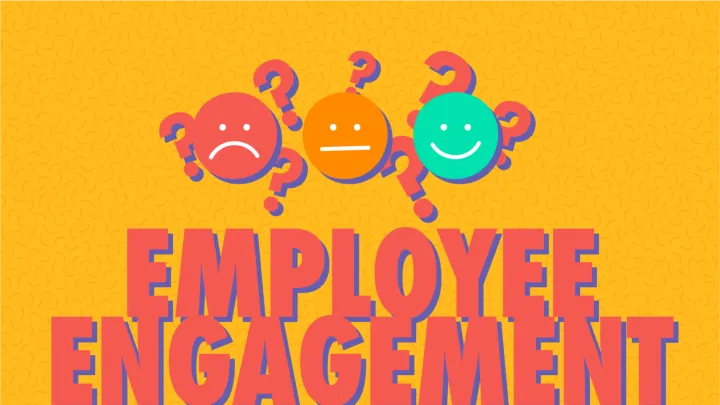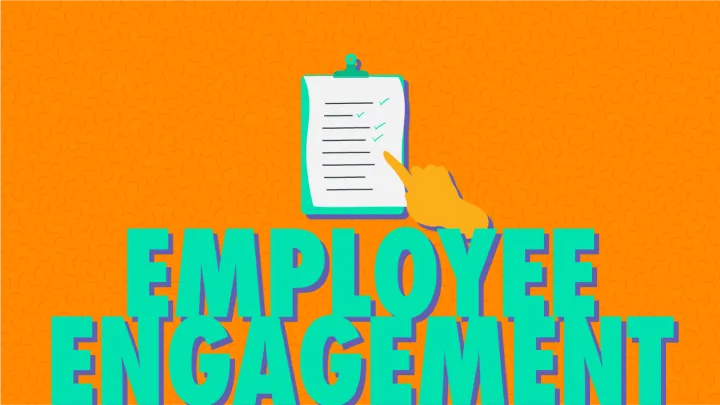Employee pulse surveys: a step-by-step guide

Businesses are shifting towards more responsive, continuous feedback systems to adapt to a changing HR landscape.
It’s no longer enough to rely on the outdated and static annual engagement survey model. Instead, HR professionals should find a way to get a pulse on their team’s sentiments, feelings and attitudes about where the business is heading.
This is a problem that employee pulse surveys solve wonderfully. The pulse survey format allows businesses to measure their team's feelings and opinions and then act on them in real-time.
This information makes it possible to gather information quickly and make prompt, focused, and effective decisions regarding business and HR strategy. The rewards? A more engaged workforce, improved team morale, higher employee retention rates and a work environment that is responsive and adaptable to the needs of your team.
We’ll dive into employee pulse surveys, what they are, how and why they work, and how you can create and launch them yourself for a healthier, more productive workplace.
Understanding employee pulse surveys
An employee pulse survey, as you might guess by the name, is a type of workplace survey format designed to feel out the general sentiment, or “pulse”, among your employees. It’s a quick, more frequent, and periodic check-in aimed at measuring the general morale and engagement of your team.
Where they differ most from traditional employee engagement surveys is in their length, scope, and focus.
Most conventional employee engagement surveys are typically held annually or bi-annually, are longer and more comprehensive, and seek to capture the broad aspects of the workplace experience.
Pulse surveys, by contrast, are shorter and conducted more frequently - often monthly or bi-monthly - which allows companies to pivot and adjust to changing shifts in morale quickly. They are more concise and brief than traditional engagement surveys, often consisting of about 5-15 questions.
Where pulse surveys have the advantage over traditional engagement surveys is that their frequency gives you access to more timely data, which allows you to act and respond to issues as they arise, rather than after the fact. They're great at quickly measuring the overall mood of an organisation and tracking the impact of more recent changes or short-term initiatives.
Rather than waiting for slower and more methodical employee engagement surveys to run their course, pulse surveys enable you to proactively address issues and capitalise on opportunities at the moment.
Overall, pulse surveys help build a workplace culture of communication, continual improvement and trust. They offer a safe and structured way for employees to offer their ideas and raise concerns. That open and continuous dialogue encourages all your team members to contribute to making the workplace better for everyone.
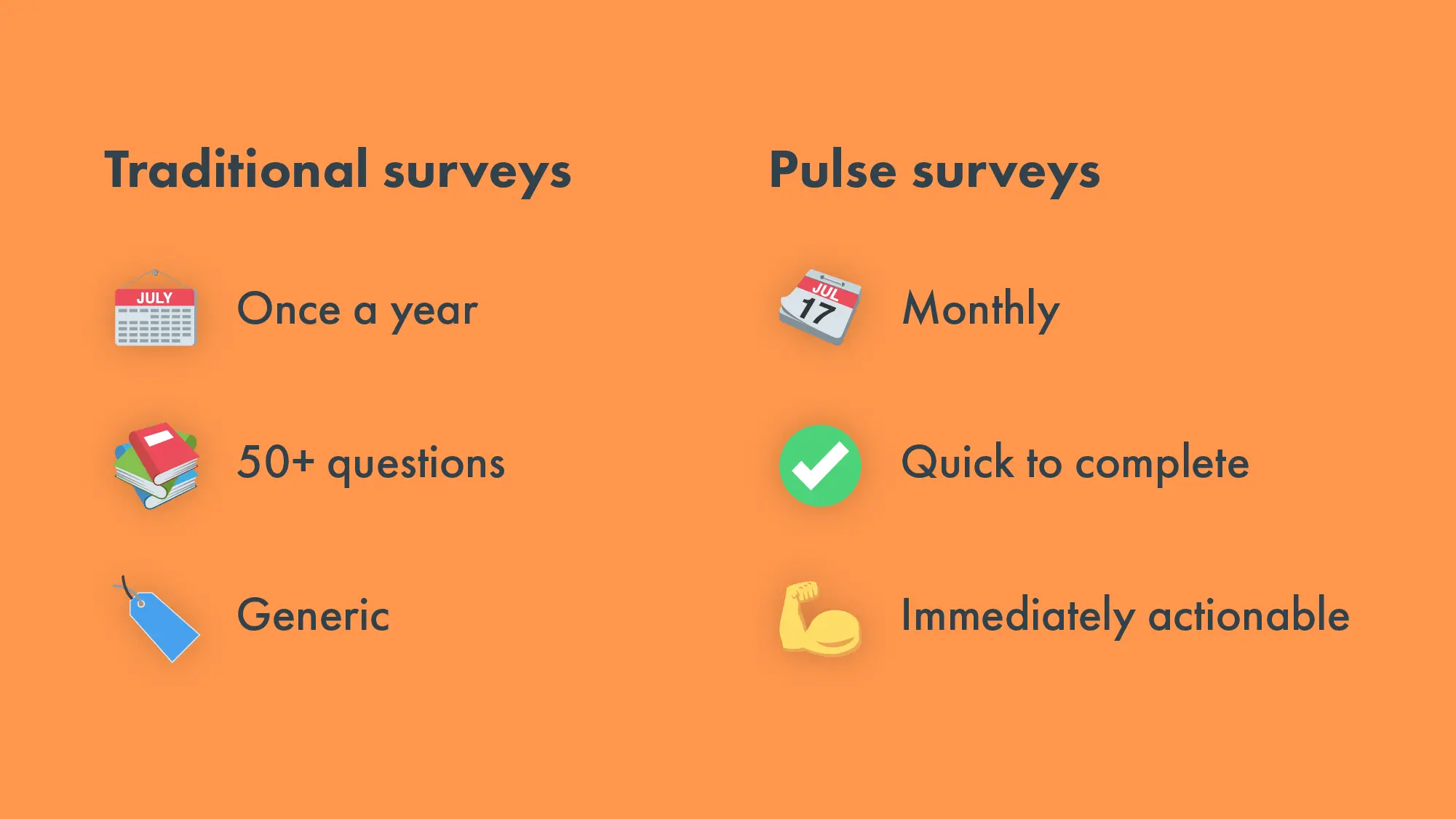
Crafting your pulse survey: what questions should you ask?
The employee pulse survey questions you include require careful consideration because of the more targeted and focused nature of the pulse survey. These must be carefully planned and curated to align with your organisation’s concerns, and the exact information they’re seeking.
Check out our blog for more in-depth information about different types of survey questions.
Here are some examples of good questions to include employee pulse survey, grouped by category:
Pulse survey questions for employee engagement
- On a scale of 1-10, how would you rate your overall engagement with your work?
- Do you feel excited about your work?
- Do you feel that your work is valued and contributes to the company’s success?
- Would you recommend our company as a great place to work?
- Are you proud to be part of this company?
Employee wellbeing pulse survey
- How satisfied are you with your work-life balance?
- On a scale from 1-10, how happy are you at work?
- Do you feel that you are adequately recognised for your contributions?
- Are your roles and responsibilities clear to you?
- Do you see a clear path for career advancement?
(Check out our article on employee wellbeing surveys for more info).
Team collaboration
- Do you feel that your team collaborates effectively?
- Do you feel comfortable sharing your ideas and opinions with your team?
- How effective is the communication within your team?
- Are the team’s goals clear and attainable?
- Do you believe there is trust within your team?
Manager effectiveness
- Does your manager provide you with clear expectations and goals?
- Do you receive constructive feedback from your manager?
- Does your manager support your career development?
- Do you feel your manager cares about your well-being?
- How would you rate your manager’s ability to lead the team?
Workplace environment and remote working survey questions
- How comfortable is your physical work environment?
- Do you have the tools and resources you need to do your job effectively?
- How would you rate the quality of communication in the company?
- Is there a good work-life balance in our company?
- Do you feel our workplace is a safe and healthy environment?
When creating your employee engagement questions, you should aim for a good balance of quantitative (1-10 scale ratings) and qualitative (open-ended, short-answer) questions.
Point-scale ratings give you numerical data that are easy to analyse, while the more open-ended questions give you nuanced insights and perspectives that are hard to put a figure on. Both are invaluable - and needed - to really understand how your team members feel about your organisation and their jobs.
Creating and launching a pulse survey: A step-by-step guide
Successfully creating and implementing an employee pulse survey that produces useful data and insights requires thoughtful planning and execution.
Here’s how to go about it:
1. Define your objectives
Start by clearly defining what you want to achieve from the survey. What are you trying to learn or understand? Are you trying to measure the level of employee engagement? Or see how your team members feel about a specific initiative or policy? Defining your objectives will help ensure that your questions are focused and relevant, and collect relevant data that you can act on.
2. Choose your questions
Next, carefully consider your questions based on the objectives you laid out. These should be clear, and concise, and strike a balance between qualitative and quantitative information gathering. You might include a question like “On a scale of 0-10, how likely are you to recommend our company as a place to work?” to measure employee satisfaction, for example.
With pulse surveys, it is also a good idea to ask the same questions at regular intervals to spot any upward or downward trend in your team’s engagement and motivation.
3. Design your survey
Making use of CharlieHR’s employee engagement survey feature helps take your questions and objectives and turn them into a survey you can customise and send to your employees. You can choose between a research-backed survey or a customised pulse survey that’s more specific to your company if you’re looking for more specific insights and information.
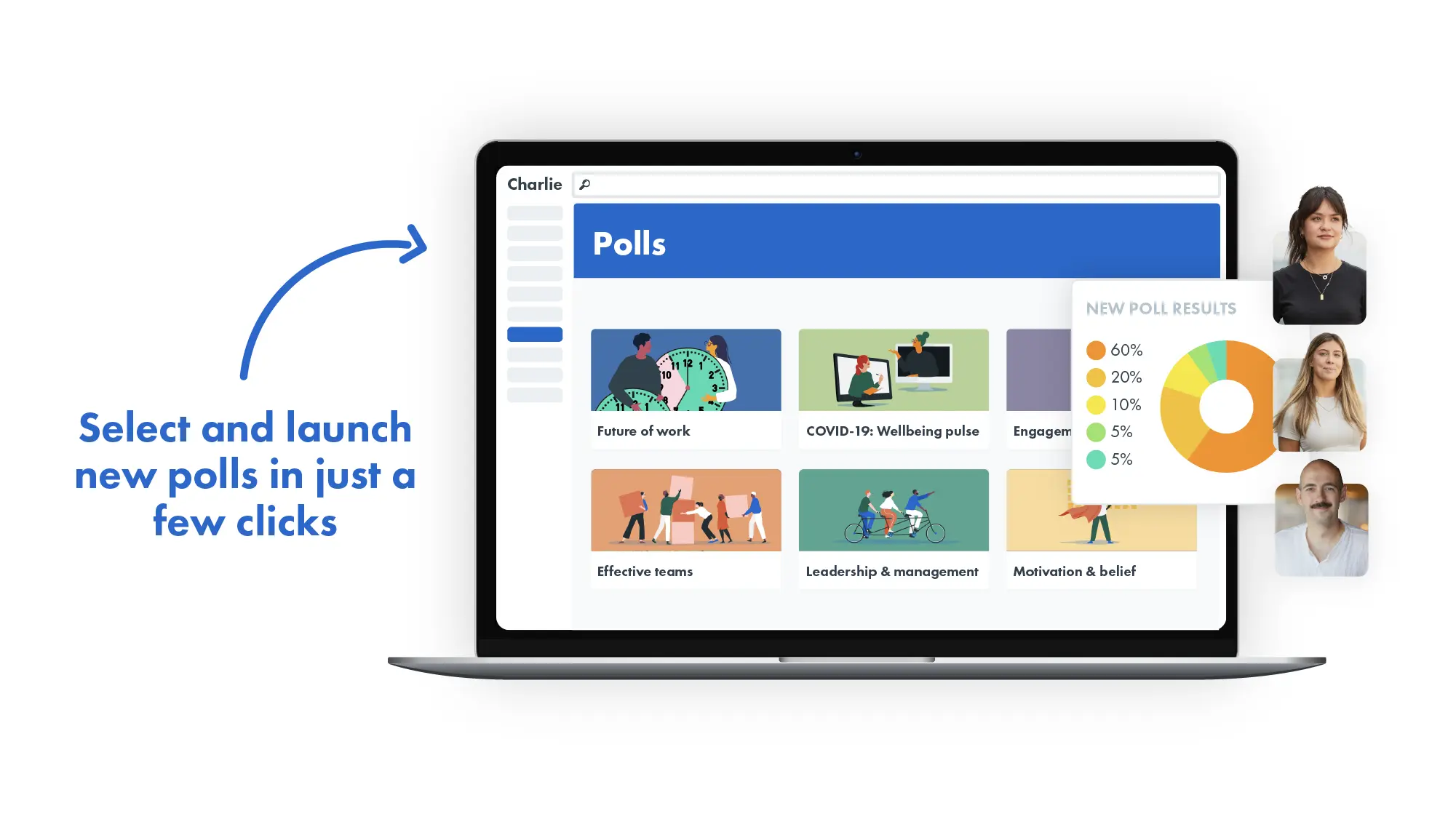
4. Schedule your survey
Decide when and how often you’d like your pulse survey to be distributed amongst your team. Sending out your survey at regular intervals will help ensure you’re keeping a finger on your organisation’s pulse. Scheduling employee pulse surveys with CharlieHR is a breeze. The platform lets you select your launch date and frequency of survey delivery, such as sending 1 question per week.
Then with a few clicks, you can schedule and launch your survey as per your defined schedule.
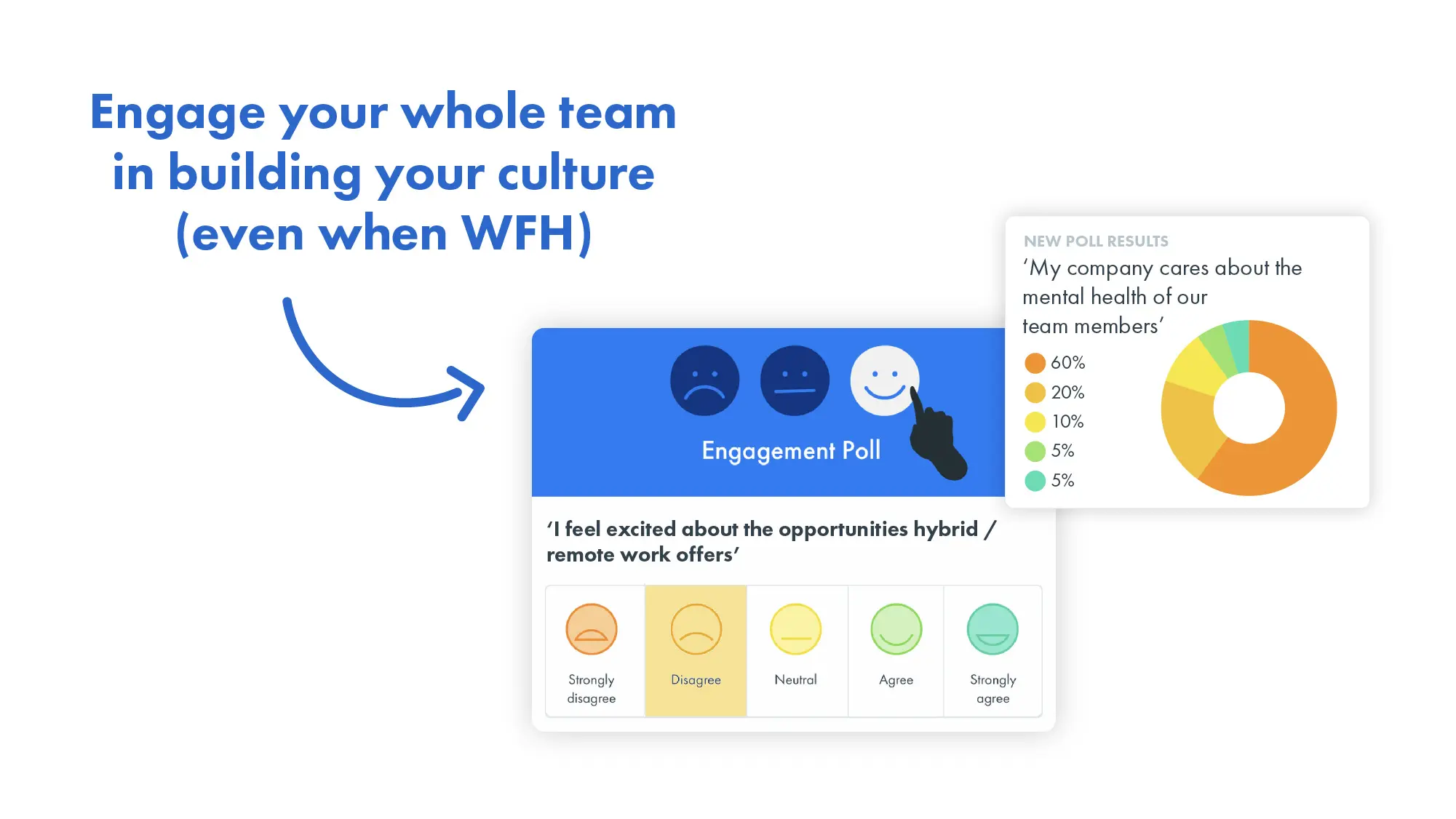
5. Collect and analyse the data, and act on feedback
This is the most important part - acting on the information given to you by the employee pulse survey to make your company a better place to work.
Understand your team’s sentiments, pointing out any recurring patterns or trends taking shape. The intuitive employee engagement dashboard offered by pulse survey tools like CharlieHR helps you track the completion rate and analyse the results, making this process simple.
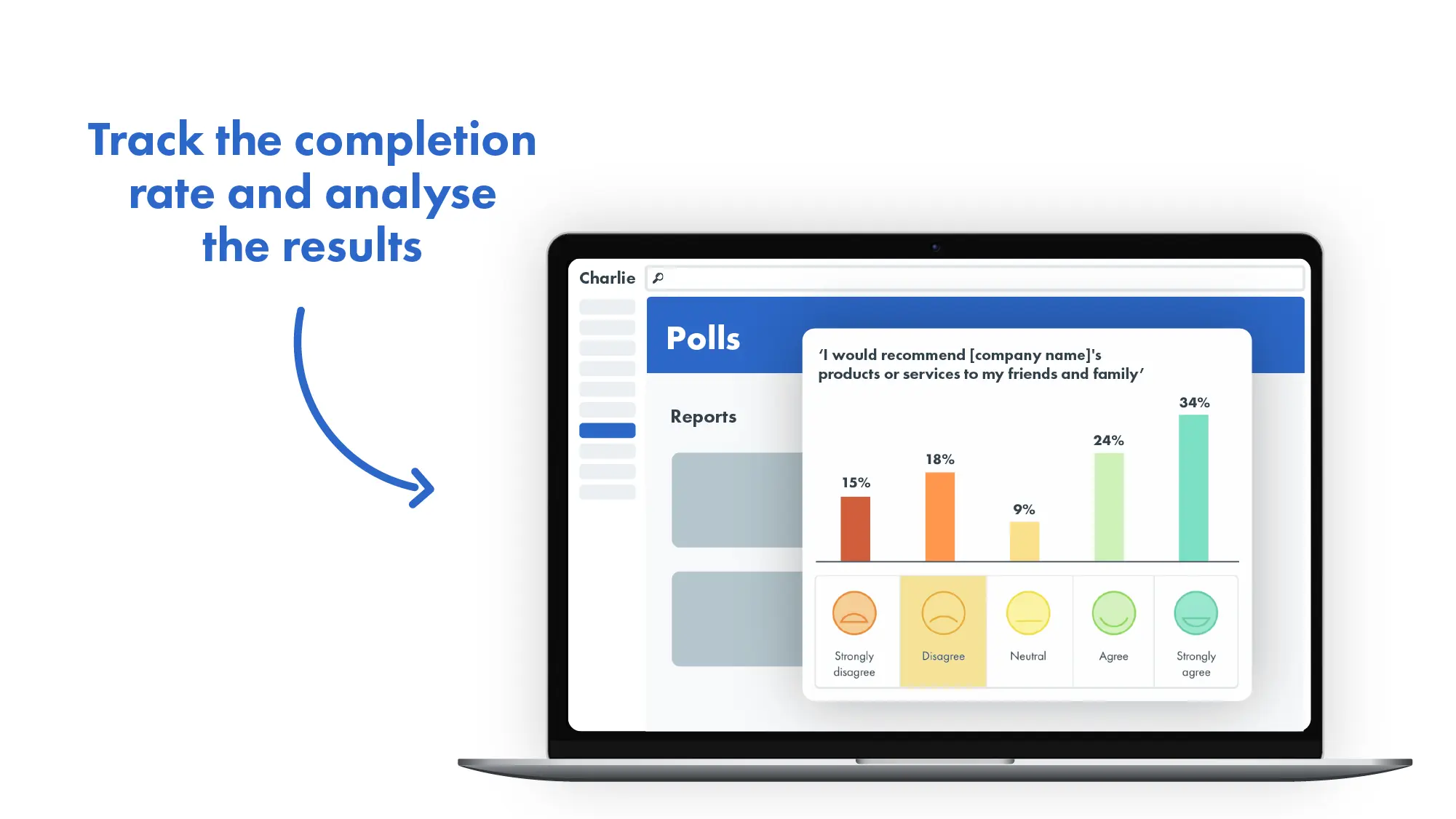
Then, act on what you learn. Develop action plans to address any areas of concern and double down on any strategies or initiatives that are working. Your team members will appreciate seeing their feedback manifest as tangible changes.
Above all, remember that employee pulse surveys are not a one-and-done ordeal. It's an ongoing process and one that will turn into continuous improvement in your workplace.
Get the pulse of your organisation’s heartbeat with pulse surveys
When backed with careful planning and intentional execution, employee pulse surveys can help employees stay engaged and motivated with continuous, real-time insights.
Implementing employee pulse survey questions into your HR strategy is a shift towards a more responsive approach to employee engagement. It’s a move that reflects the importance of maintaining a dialogue with your team - hearing what they have to say and using their insights to inform decisions regarding your business.
With CharlieHR, creating, launching, and analysing your pulse surveys is a walk in the park. If you’re curious about how employee pulse surveys, why not give it a go?
Start a free trial with CharlieHR today, get started with using employee pulse surveys to make a happier, more engaged company.


